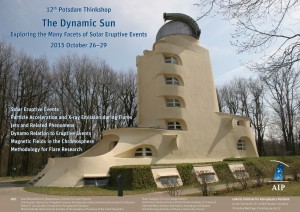Superflares on Solar-Type Stars: The Curious Case of EK Draconis
Thomas Ayres (University of Colorado – CASA)
Abstract. Super-flares have been reported on a number of solar-type stars, mainly from Kepler photometric time series. These “white-light” events exceed the energy output of the solar counterparts by several orders of magnitude, or more. Unfortunately, the broad-band visible response of Kepler conveys little information concerning the flares, other than the visual temporal evolution and broad-band energetics. Fortuitously, however, a far-ultraviolet super-flare was captured by Hubble Space Telescope’s Cosmic Origins Spectrograph (COS) during a multi-day campaign in 2012 on young solar analog EK Draconis. The equivalent rating on the GOES scale was X25,000 (largest recorded on Sun: X25). The intriguing aspect of the EK Dra flare, with regard to solar dynamic outbursts, was the prevalence of strong redshifts of “hot lines” like Si IV 139 nm: perhaps due to strong compression of the lower atmosphere by the explosive energy release, or a reverse flow of cooling plasma from the heated corona, an “anti-flare” if you will. The high temporal and spectral resolution achieved for the EK Dra event by super-sensitive, time-tagged COS makes this flare unique in the annals of stellar activity, and a key piece of the solar-stellar connection puzzle.
Contributed Talk

Write a comment Close comment form